Earlier this summer, I went on a little weekend trip with my family to the countryside. We stayed at a farmhouse, and right there outside the farm cottage was placed a well hand pump. Hadn’t seen those in a while, I thought to myself.
Being into antique things, that well hand pump managed to capture my attention really well. Of course, since the cottage kitchen and bathrooms were well-equipped with running hot and cold water in every tap, the well hand pump was of no use anymore, which was also a hint that that hand pump was really very old. I talked to the owner, and he was ready to sell it. Mainly, he wanted to get rid of it, so I got it off his hands really quickly, just for a few bucks, and it went straight into my trunk.
You might be wondering why I did that. Why did I go out of my way to get an old rusty hand pump when it could possibly be of no use to me? Well, let me tell you why. There is a massive market for antique well pumps. That hand pump looked really old, which meant if I correctly identified it, dated it, and valued it, I could easily make a considerable profit by selling it at an auction house or to any of the antique water pump collectors.
How will I do all of that? That is what I am going to explain in the rest of this article.
Table of Contents
What is an Antique Well Pump?
Before faucets were a thing, well pumps were all one could use to get water. A well pump was used to pump water out of a well using a hand lever. In some areas, mainly near farmhouses, well pumps are still in use.
Nowadays, you can find them near farms or sitting in antique shops, reminding you of the past. Since these pumps were once as important as the faucets in our kitchens today, they usually have some kind of antiquity attached to them. In fact, there is a large community of antique well pump collectors that are always looking out for them.
If you are currently in possession of a well-pump that you want to sell or are looking to invest in one, make sure you know all about its identification, types, and value before you make a decision.
Types of Well Pump
Although old well pumps all look the same, there are different kinds of them manufactured by several companies.
1. Simple Hand Pump
A simple hand pump was the earliest and, consequently, the most antique kind of well pump. This design of a well pump could only be pumped by hand using a lever. Each stroke of the lever would release a gush of water flowing through the cylinder of the pump and out of the pump’s mouth. The simple hand pump would require too much effort for too little water you can get at once.
2. Double Cylinder Pump
As its name suggests, the double cylinder pump was a more efficient kind of pump with two cylinders. The two cylinders of the pump were extended into the well, which made it a more reaping method of pumping the water from the well.
Using the lever, the water could be pumped through the cylinders and out of the pump spout. When one cylinder released the water, the other would be refilled at the same time. That way, one lever stroke would release twice as much water. In other words, a double cylinder pump is much less work than a simple hand pump.
3. Windmill Pump
The windmill pump was a modern type of well pump that eliminated the hand lever element of well pumps. It used the power of the wind that constantly blows across farmlands to pump water out of the well. It made farmers’ life a lot easier because they didn’t have to deal with the effort of hand levers anymore.
4. Force Pump
A force pump was used when the water had to be carried across a considerable distance from the farm. The force pump elevated the water stream, causing pressure in the pump cylinder.
Special parts like a sucker rod and packing gland were built in the force pump’s cylinder so it could expel the water forcefully to where it was needed. This eliminated the effort of taking water from one place to another manually.
5. Chain Pump
A chain pump is a type of well pump that doesn’t come up when we are talking about antiques mainly, but it has been around for centuries. They are still majorly in use around farmlands. They are built with chains that carry a series of discs. These discs go down into the water and then come up inside a tube, taking water in large quantities along with them.
Made with a simple hand pump design, the only difference between a chain pump and a hand pump is that there is a chain technology that’s pumping the water instead of a human hand, eliminating the physical effort at all.
6. Unusual Pumps
Back when hand pumps were common, a lot of people believed that drinking water that came out of cast iron was not healthy. That gave way to unusual changes in the designs and parts of well pumps.
For instance, the cylinders of these pumps were designed more decoratively and lined with porcelain and brass. In addition, manufacturers used leather cups to prevent leakage and to seal the cylinders so the water wouldn’t touch the cast iron.
Due to their ornate designs, these pumps nowadays carry higher antiquity than ordinary pumps of different types.
Identification of Antique Well Pumps
In order to identify antique well pumps, there are several things that you need to make notes of. The first thing is to figure out what type of well pump it is – we have already covered that. The second thing is finding out which brand manufactured it.
Manufacturers of Well Pumps
Back when hand pumps were still popular in use, many brands and manufacturers were making their dough by producing and selling them. Some of these brands were more regarded than others. As an antique well pump, a brand may not make much of a difference as compared to its condition and style, but it would still give you some power if you know what brand you are exactly dealing with.
- Aermotor
Aermotor is an American manufacturer of windmill pumps. Their wind-powered pumps were widely used in the arid plains and deserts across the United States, mostly in the west of the country. Aermotor has been in business since 1888 and is still one of the most preferred brands when it comes to windmill pumps.
- Fairbanks-Morse
Fairbanks-Morse was founded in 1823 as a producer of cast iron plows and heating stoves. They were the leading producers in the US for generations. The company produced and sold several other products before they brought windmill pumps from another producer in their product line.
- Red Jacket
Red Jacket Manufacturing Company is a known producer and seller of water pumps. Their red-colored water products are their signature throughout the country.
- Dempster
Dempster was a private American company that produced and sold submersible pumps, windmill pumps, water systems, and more products and accessories. It was a popular wind pump brand for centuries before it finally closed in 2011.
- Y McDonald Manufacturing Company
Originated and based in Iowa, The A.Y McDonald Manufacturing Company produces and sells waterworks, brass pumps, and water systems. The company was founded in 1856 and still deals in brass casted water pumps.
- E Myers & Bro. Company
F.E Myers and Bro. Company was founded in 1870 in the industry of water systems. The company was also known as Ashland Pumps, and Hay Tool Works due to its headquarters based in Ashland, Ohio. In 1986, the company was acquired by Pentair, Inc., and the brand “Myers” was marketed under the name of Pentair Pump Group, Inc.
Model of the Well Pump
Apart from the type and manufacturer, the model of an antique well pump would also give you the benefit of knowing more about the pump you are dealing with. Usually, the model number is printed right beside the manufacturing date, which will let you know exactly how many years ago a particular well pump was produced.
However, even if you don’t find the manufacturing date right away, the model number and the manufacturer are enough; you can use the internet after that and connect the dots.
So, how can you find the model of a particular pump? Here is how.
-
Manufacturer’s Tag or Plate
Well, the easiest way is to find the pump for any manufacturer’s tags and plates. A pump tag or plate is a small rectangular plate (literally like a license plate but more minor) that displays all the basic information of a pump, including manufacturer, manufacturing date, model number, and even other details about the pump’s operations.
-
Casting Number
If the pump you have on your hands is very old, it most likely wouldn’t have the plate or tag intact. In that case, you can try to locate the casting number. Casting numbers are directly stamped on the steel, iron, or bronze of the pump (or whatever material the pump is made of), which means that it would stay there for centuries.
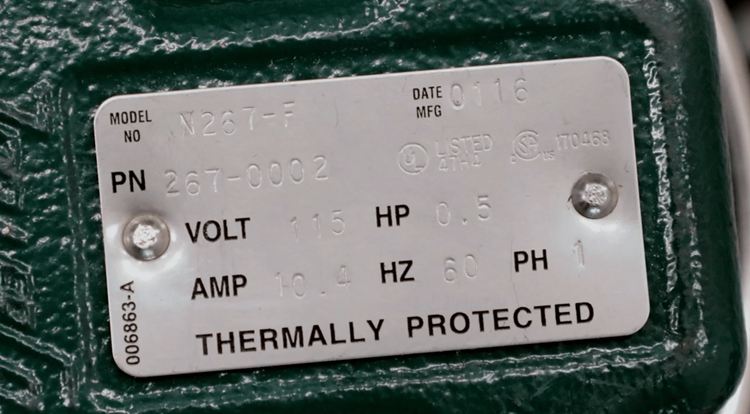
The casting number can tell you about the manufacturing date, model number, and manufacturer all alike. However, if your pump doesn’t even have the casting number, you can try the third method.
-
Call an Expert
The third and last method to figure out your pump’s model and manufacturing year is to reach out to an expert and have them look at your pump. They would probably charge a small fee, but if you manage to contact the right person, chances are they will give you solid information.
Most pump experts have seen all kinds of pumps and possess more information on the topic than the internet. However, make sure you make it clear to them that the pump you want to be dated is an antique pump and not a modern, electric one.
Antique Well Pump Value Guide
Once you have identified the antique pump, the next step is valuing it. Now, figuring out the value of an antique well pump is not an easy task. You need to focus on several factors, including its condition, age, quality, and rarity.
Moreover, since it’s not just an antique well pump and would most probably be used as a collector’s decorative item, you need to consider its size as well.
Condition, Quality, and Rarity
If the antique well pump in question is in good condition, it means it is not covered in rust and broken parts. It also means that if it is fitted in the well, it would most probably operate properly.
In other words, the condition goes hand in hand with the quality of the pump. The higher the quality, the more likely it is to be in good condition. You need to keep it in mind when valuing an antique well pump.
Hand pumps made in the 1850s and 1900s sell for more than thousands of dollars now, only because they are kept in good condition by their owners. The same vintage pumps can be found on eBay for a few hundred bucks (or even less), but they would be covered totally in the rust because the owner didn’t pay much attention. These are the things that you need to keep in check if you are in possession of an antique well pump.
On the other hand, rarity is as vital as the antique pump’s condition and quality. To be fair, well pumps are not rare. If you visit countryside areas, you will find simple hand pumps sitting there in the sun without anyone batting an eye. Even many farmlands in the west still use them.
However, if you manage to get your hands on the right piece, it can make all the difference. In all cases, the condition the pump is in is the most crucial factor when it comes to its value.
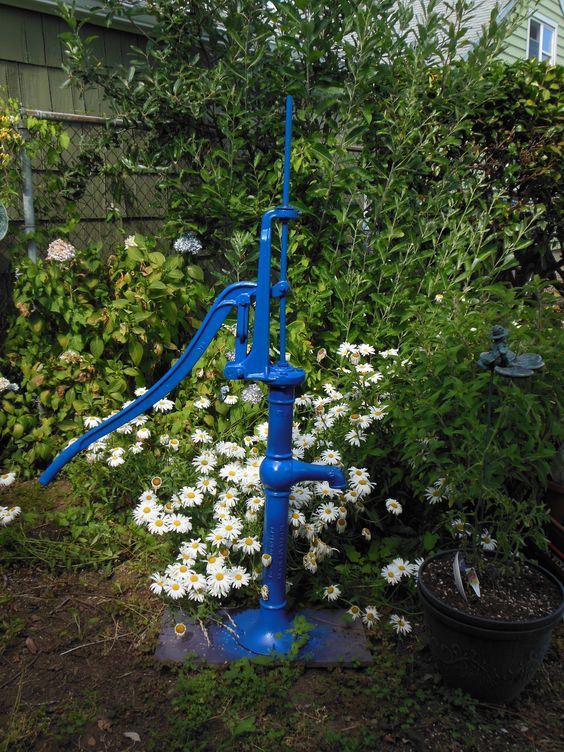
Antiquity
The antiquity of a well pump is another essential factor to consider in valuing it. Since well pumps are not commercialized in this day and age, it’s hard to tell which one is antique and which one is not.
Now, when it comes to antiquity, most dealers just expect you to take their word for it. They would tell you that the particular pump is hundred years old, and you might just believe them, but there is no way to know for sure unless there is a manufacturer’s mark on the pump.
No matter how antique the pump is, most appraisers would tell you the lowest price possible (as low as $50 to $60) if there is no mark on the pump unless the pump is visibly in good quality and condition and has a visible factor of rarity.
On the other hand, if the mark is present, the pump’s antiquity can be figured out easily, and you can value it pretty easily based on its antiquity.
Size
Most antique well pumps are simple hand lever pumps, and they vary greatly in size and weight. Some are so small that they can even sit on your living room shelf and become a perfect decor. Some are big enough to become garden items.
In any way, the size of the pump determines how the collector will place it under their possession, and it creates a noticeable difference in its price. Most online appraisers wouldn’t just give you the estimate based on the pictures of the antique pump; they would ask you to give the exact dimensions before touching the price.
Where to Get Your Antique Hand Pump Valued?
If you are in possession of an antique pump and want to get it valued in terms of estimated price, you can do that in several ways.
However, before you do that, I would recommend that you thoroughly clean your pump and present it in the best way possible. The quote you will get is going to depend on how your antique pump visibly looks and what condition it is in.
There are paid ways to get an appraisal for your antique well pump, but if you want to get it done for free, check out the following ways.
- Visit your nearby auction house on appraisal day.
If you have got an auction house nearby, call them and ask if they have an upcoming appraisal day scheduled on their calendar. On appraisal days, auction houses make it open for all the antique collectors to bring a limited number of items and get them appraised for free.
You could take your antique pump there with all the information you have on it and get a free quote.
- Go to an antique shop.
An antique shop near your place is most likely to have an in-house appraiser for collectibles and antique items. Visit the shop casually and ask them what your antique pump is approximately valued at. They will give you the estimate in hopes that you will sell it, but if you don’t want to sell, you don’t have to. Just get a quote and walk out.
- Visit the Antique page of Just Answer.
Just Answer is a website where experts in all fields come together to help people figure out the value of their possessions or answer any other queries. The antique page of the site is where all antique collectors, experts, and possessors interact. You can make an account and ask a question openly on their site.
In a matter of a day or two or even less than that, an antique expert registered with the website will respond to you after doing their research. You can choose to compensate them for their time and effort if the answer satisfies you.
- Antiques and Appraisalson Facebook.
Antiques and Appraisals on Facebook is a large community group with over fifty thousand members. The group includes antique collectors, enthusiasts, possessors, and experts. Once you join the group, you can make a post about getting an appraisal for your antique hand pump.
Make sure to include all the information you have in the post, along with the pictures of your antique hand pump. An expert appraiser would most likely comment on your post with an estimate or reach out to you through a direct message.
- Contact antique well pump collectors.
There is a large number of antique well pump collectors out there. You will have to make a little bit of effort to find them, but some places where you can find antique well pump collectors are through antique shops, auction houses, and antique exhibitions at galleries.
You can also find them on Facebook, Reddit, and other online interactive communities. If you manage to find the right person, you can get your antique well pump valued and probably make a sale too.
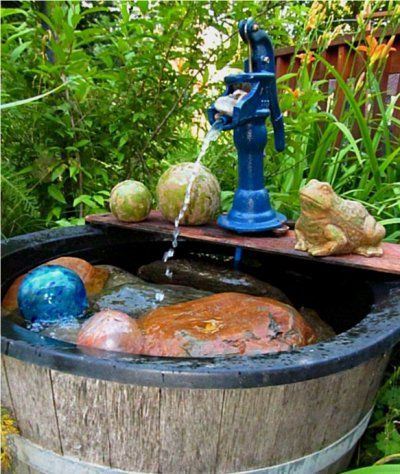
Final Word
Antique collectors roam from shop to shop and farm to farm in search of authentically antique hand pumps to use as decorative items in their houses and gardens. These iron or steel relics are found frequently sitting among flowers and grass, free from hard work. Other times, they are mounted on fountains with water flowing from their spout.
People treat and use antique hand pumps just the way they want. Some restore them to their natural state, while others paint them to match the surrounding decor. Whatever color or state they are in, they are a constant reminder of how our lives have changed throughout the centuries. That is what makes the hand pumps so antique.
You might not even know,eas and you could be sitting on a vintage fortune. That is why it is critical to know what kind of antique pump you have, how old it is, and what exactly its value is.

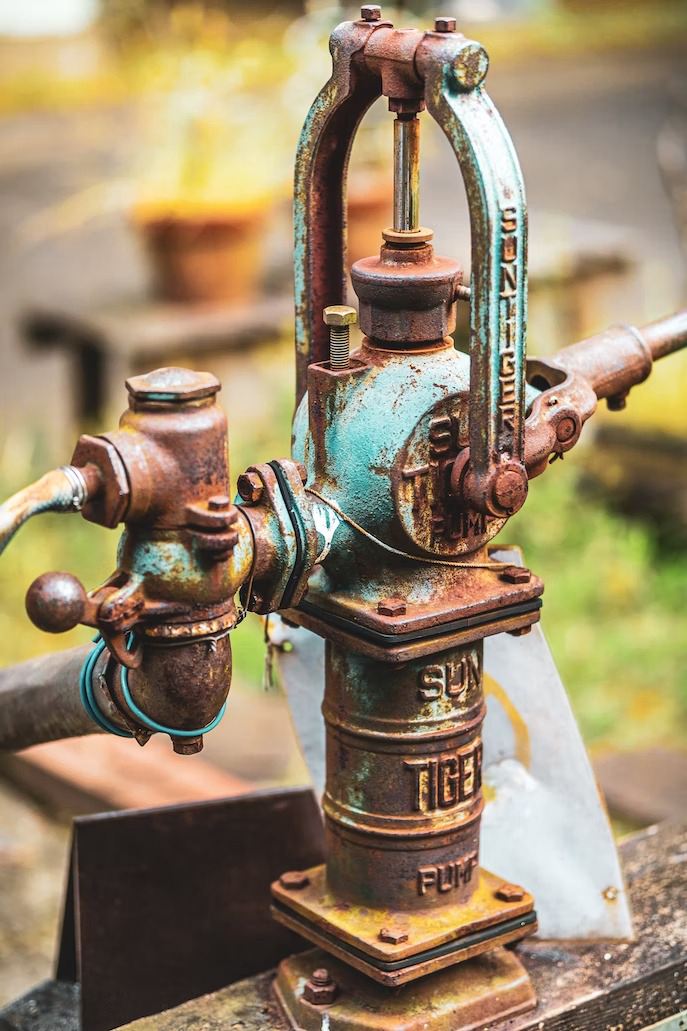
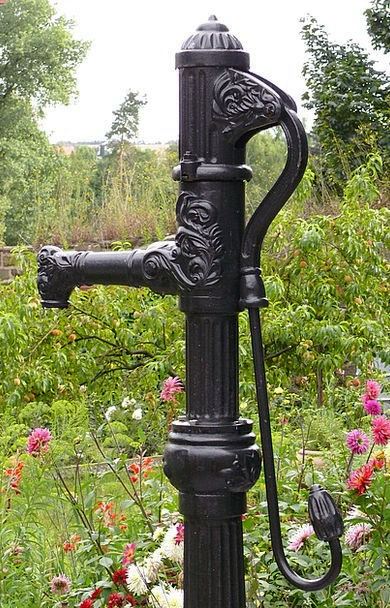




![Where To Sell Antique Furniture In 2022 [Ultimate Guide]](https://www.jacquelinestallone.com/wp-content/uploads/2022/09/Etsy-Your-Place-To-Buy-And-Sell-All-Things-Handmade-600x450.jpg)


